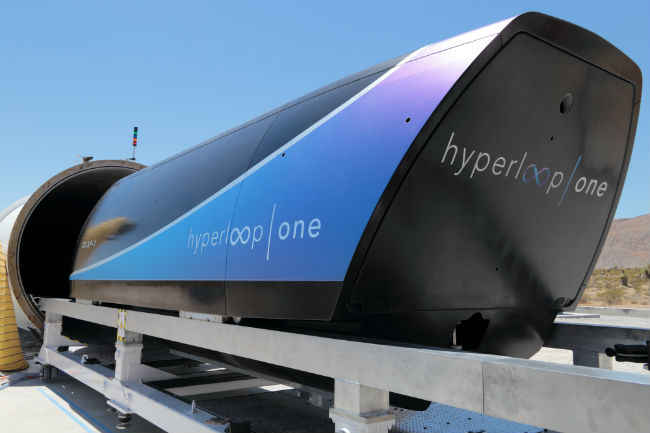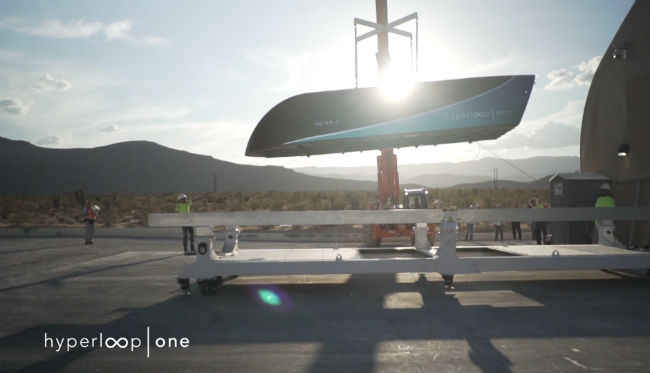How feasible is Virgin’s Hyperloop plan for India?

With Virgin founder Richard Branson talking about a proposed Hyperloop corridor between Mumbai and Pune, we take a look at the possible cost, pros, cons and feasibility of a completely new mode of transportation in India.
The hype surrounding Hyperloop has never really died down, ever since Tesla and SpaceX CEO, Elon Musk floated the concept. On February 18, Virgin founder Richard Branson stated that his Hyperloop One team is working alongside the Maharashtra government to establish a Hyperloop route in India, which may well be the first one in the world. This announcement has raised a rather interesting and quiet frenzy, about the possibility of it all. While Hyperloop was initially earmarked to debut in Los Angeles or Dubai, it now stands with the prospect of being inaugurated in Mumbai, India. Is that feasible, at all? If so, how may it work out? We try to break it down for you.
What is Hyperloop?
As per the initial ‘Hyperloop Alpha’ concept paper floated by Musk, Hyperloop is a futuristic mode of transport that is built on elevated or underground vacuum tubes. Inside these tubes, specialised pod-like structures will carry passengers along at speeds that can theoretically reach up to 1,000km/h. While the initial factor that strikes everyone is the speed quoted in Hyperloop’s initial presentation, the completely new transportation technology actually addresses more than just that.
For one, Hyperloop will work in the same way as urban, short-distance metro railway lines, on a larger scale. Vacuum tubes, either subterranean or elevated from the ground, will be used for the ‘track’, which ensures less load on roadways and addresses the growing concern of traffic in urban spaces. Additionally, these tubes and the pods will generate its own electricity for plying via solar panels all along the tubes. This not only addresses the question of extra energy to be consumed, but also reduces the carbon footprint and emissions related to travel.

Furthermore, Hyperloop’s potential speed can ensure that a large number of individuals can travel back and forth cities that are as far as 400 kilometres apart, on a regular basis. This is one of the stepping stones of smart mobility and smart cities that are presently being discussed, where travelling will mostly be via shared, autonomous modes of transport, along less congested routes, and via alternate travelling methods.
Hyperloop is one of the alternate travelling modes that are being touted for the future, along with flying taxis. However, with the usage of air space remaining strictly controlled and being understandably more difficult to be worked around for logistic and legal reasons, the idea of slick pods travelling along straight vacuum tubes that connect multiple cities sound like a far superior idea.
Why India?
In India, the cost factor (explained below) may play a key factor in establishing the world’s first Hyperloop route. For one, the Mumbai-Pune corridor that has been earmarked as a potential inaugural Hyperloop route relies majorly on road and rail, neither of which qualify as high speed and efficient transportation in the context of smart cities. This leaves ample space for a new, alternate transportation method to establish itself, and even work in setting an example for further mobility options that would follow in future.

Mumbai and Pune, incidentally, have also been identified as potential candidates for smart cities. As Tata Motors had identified in its smart city plan, it is important for smart cities to have their own identity when it comes to transportation – an identifier of sorts, which helps the city build upon its mobility options. Alongside, Ford enumerated the need for efficient, non-polluting and fast modes of shared transportation that solves the biggest issue of congestion. Taking these into account, Hyperloop is the perfect candidate. The Mumbai-Pune route in present experiences moderate to high levels of congestion, particularly between Friday and Monday. This is primarily owing to those who have families residing in Pune, but work in Mumbai. With housing affordability in Mumbai steadily going down, the number of people who regularly travel between the two cities is slated to increase manifold.
This is where Hyperloop would fit in. At present, the average travel time between the two cities, taking into account the average congestion, can go up to almost four hours, or even five. With companies pushing for smart last mile connectivity, Hyperloop can serve as the ideal mass transit system that can get people from Mumbai to Pune (and vice versa) in less than 30 minutes. On average, the overall point-to-point travel time can go down to as little as one hour. For a major section of the working crowd, Pune would serve as an ideal residential city if the travel time between Pune and Mumbai goes down so drastically. This in turn would ease congestion on roadways, leave a wider choice of fast mobility options, and have Pune as a potential smart city hub for electric mobility, and eventually evolve as one of India’s first smart cities. The smart city initiative, incidentally, was geared to convert 100 Indian metropolitans into smart cities by last year, and Hyperloop can be the ideal push towards smarter livelihood, both from the perspective of the identity of a city’s mobility options, and the efficiency of it.
The stats: Possible cost and viability
When Musk first floated the Hyperloop concept, he quoted an estimated figure of $6 billion (Rs. 38,500 crore) for a fully functional passenger version of Hyperloop running a 600km stretch between Los Angeles to the San Francisco Bay Area in USA. However, in late-2016, a set of internal documents obtained by Forbes revealed that the cost of building and running Hyperloop would be significantly more than what was initially projected, and go up to as much as $13 billion, or Rs. 84,260 crore.
In terms of cost, the Mumbai-Pune corridor in India would have a number of advantages over building Hyperloop routes in developed nations. For one, the cost of procuring land and the engineering expenses would be significantly lower between Mumbai and Pune, than in Los Angeles or Dubai. If one consults the price and value indices, the average cost of land and living across Mumbai is over 500 percent lower than in Los Angeles. This would directly translate (not proportionally) to lesser cost of establishment, engineering and operations in India.

VHO (Virgin Hyperloop One) has estimated a total cost of about Rs. 20,000 crore ($310 million) to host the feasibility tests, build and establish the Hyperloop network between Mumbai and Pune, which is a meagre fraction of an equivalent route across Los Angeles and Bay Area, or Dubai and Abu Dhabi. VHO chief Branson has further stated that the proposed Hyperloop route will have the capacity to ferry 150 million passengers every year. If VHO can match its cost and passenger count estimates, the route can match its total establishment and maintenance cost within four years, if it prices its tickets at around the same as the standard bus fare between the two cities. At approximately Rs. 400 per passenger at its proposed maximum capacity, without taking passenger count increase into account, the Hyperloop project may even tend towards making profit within about five years of being operational.
In comparison, the proposed bullet train route between Mumbai and Ahmedabad has been quoted at an estimated expenditure of $17 billion, or a staggering 1,10,160 crore. This route would also require additional supply of electricity to run and specialised platform hubs, and would not be a fast mode of transportation in comparison to what Hyperloop can potentially achieve. This route would be more expensive to run and maintain, be slower in overall duration of commute, and be a sizeable expenditure to the government’s costs.
The possibility
While the feasibility tests are yet to be undertaken in the next six months, Hyperloop makes an immense amount of sense for being implemented in India. It takes lesser ground to be established, generates its own power with solar panels, drastically reduce carbon and greenhouse gas emissions by 150,000 tonnes every year, run at significantly lesser cost per customer, establish a ground for Mumbai and Pune’s quest to evolve as smart cities, and above all, bring the travelling time down by almost 600 percent.
Many may argue that air travel is already in place for fast commuting, but once all factors are taken into account, it is barely a fast procedure, and for the roughly 250km stretch of Mumbai and Pune, the total air travel time exceeds well above four hours from point of origin to destination. It is this, and more, that makes Hyperloop an ideal candidate for this corridor, and more such similar routes across India.




